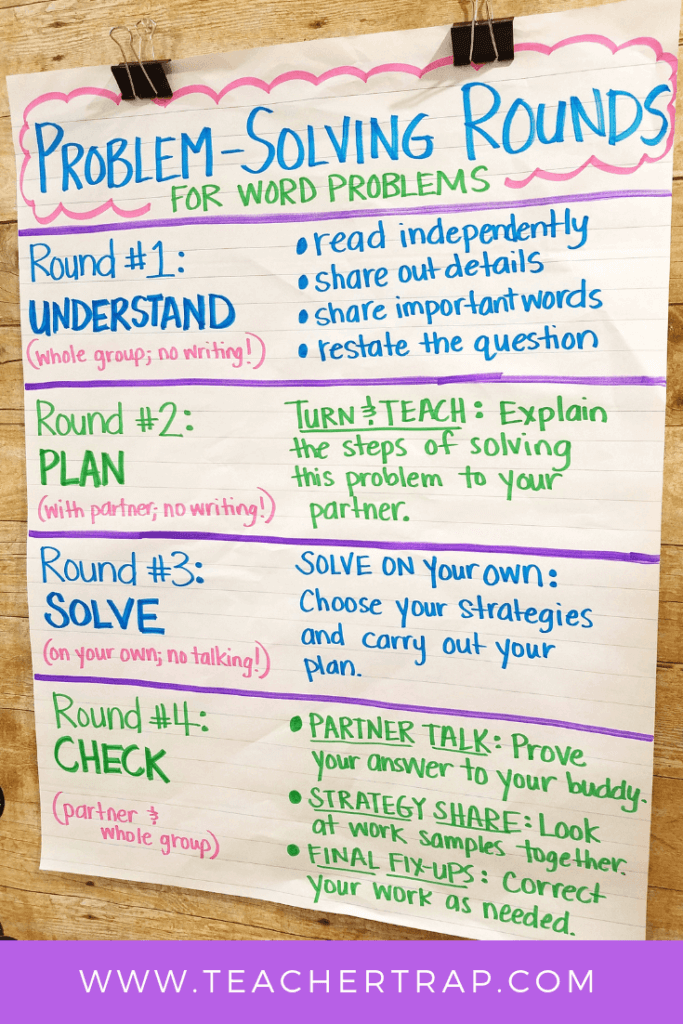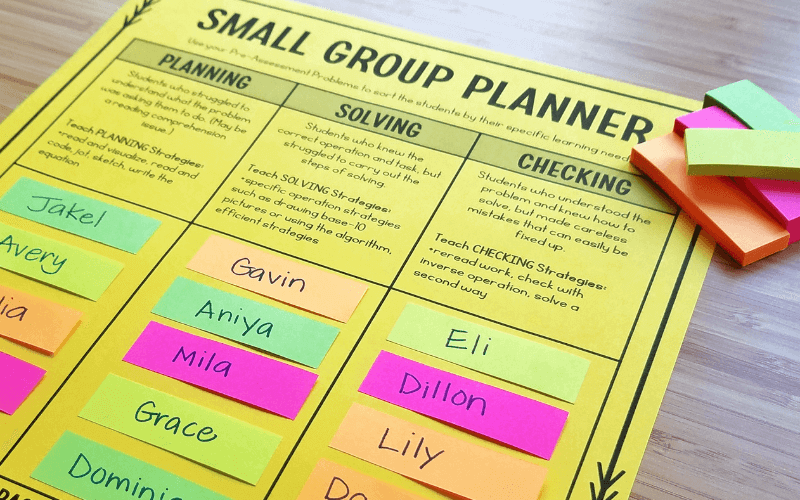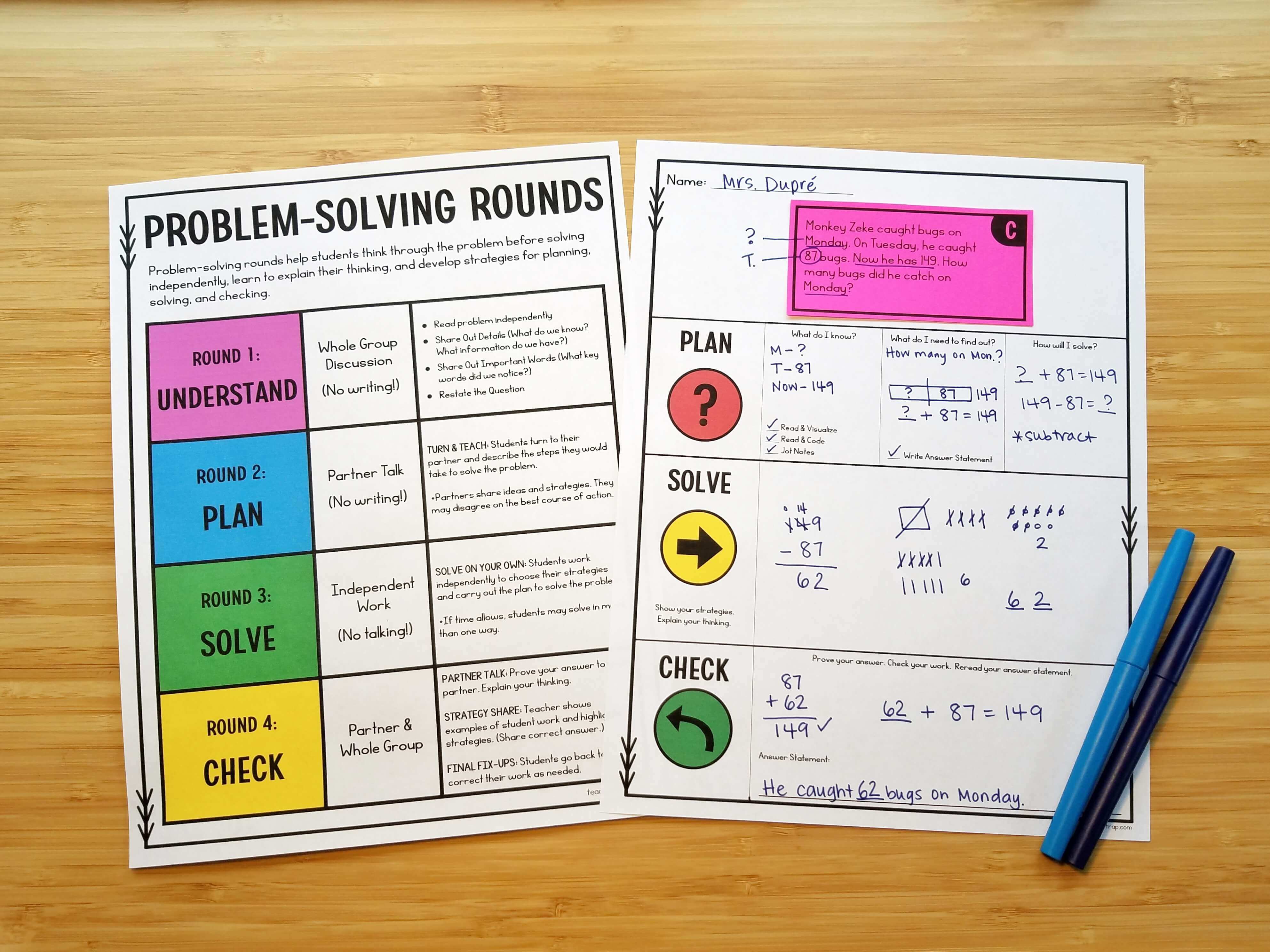In Word Problems Made Easy, I shared my favorite tips and tricks for helping students master math word problems. In this post, I’d like to take a closer look at one of the strategies I mentioned: Problem Solving Rounds. This powerful routine changed math instruction in my classroom forever!

Problem Solving Rounds are an important part of my math instruction. Almost every day, we take time to work through a math word problem together. In some units, this process becomes part of my daily math review, while in others the rounds are a key part of the unit itself.
NOTE: You can download a FREE printable version of this chart in my Word Problem Bundle Sampler Pack!
Round 1: Understand
The first round is all about helping students SLOW down and pay closer attention to the actual word problem. In this round, we don’t discuss how we will solve the problem or the strategies that might work best, but instead focus on our understanding of what is happening in the problem.
I always ask students to first read the problem independently. I say, “Please read the problem twice and try to visualize what is happening.” After a moment of silent reading time, I’ll invite students to share out important details from the problem.
There are 29 monkeys eating bananas.
There are 18 monkeys eating bugs.
More monkeys are eating bananas than bugs.
Next, I ask if anyone noticed important clue words.
I noticed the phrase “how many more.”
And last, I ask students to turn to their neighbor and restate the question in their own words. I might also ask them to craft an Answer Statement.
We have to find out how many more monkeys are eating bananas.
We need to know the difference between monkeys eating bananas and monkeys eating bugs.
There are ___ more monkeys eating bananas than bugs.
Round 2: Plan
The rounds follow the same problem-solving process we follow on their Thinking Mat (Plan, Solve, Check), so the next step is to make a plan. I tell students to “Turn and Teach.” Their job is to explain to their partner the steps involved in solving the problem. During this round, students may not write or share the answer. The goal is to give step-by-step instructions.
The partners may not agree, but should listen to each other’s ideas and discuss why different strategies do or don’t make sense. This round is especially powerful for students who like to think aloud (think by talking) and for those who feel unsure about how to tackle the problem.
Round 3: Solve
Now, students can finally pick up their pencil and solve the problem. In this round, the class works independently to carry out the plan they discussed and solve the problem. There is no talking! The goal is to give the class silent work time and challenge students to carry out the steps on their own. For students who finish quickly, I encourage them to try solving another way.
Round 4: Check
The final round includes 3 important parts. First, I ask students to turn back to their partner and prove their thinking. Partners take turns showing each other their work, explaining their steps, and demonstrating how they know their answer is correct. This allows students to hear other ways of solving and other explanations of the steps.
Next, we do a Strategy Share and look at the correct answer. For this part, I select work from a few students and highlight specific strategies. For example, I might select a student who used a very efficient strategy and ask that student to explain their work to the class. This is also a great time to highlight work from students who need to grow their confidence!
Last, students go back to their work and do any Final Fix-Ups. This is their chance to rethink their work and make any needed changes.
Why This Works
Problem Solving Rounds are a powerful tool for encouraging thoughtful problem-solving and growing your students ability to think through tricky word problems. Because the routine matches the format of the Thinking Mat I use, students develop a habit of planning, solving, and checking any word problem they encounter.
You can download a FREE Problem-Solving Rounds Chart and Thinking Mat in my Word Problem Bundle Sampler Pack or any set from my Word Problem Solving Bundle.
The habits formed by regular use of Problem Solving Rounds and the Thinking Mat have helped my students become more confident and effective problem-solvers in all areas. I’ve seen gains not only with their ability to tackle tricky word problems, but also in their test-taking skills.
As always, I’d love to hear from you! What are your students struggling with most? What tips can you offer other teachers?










